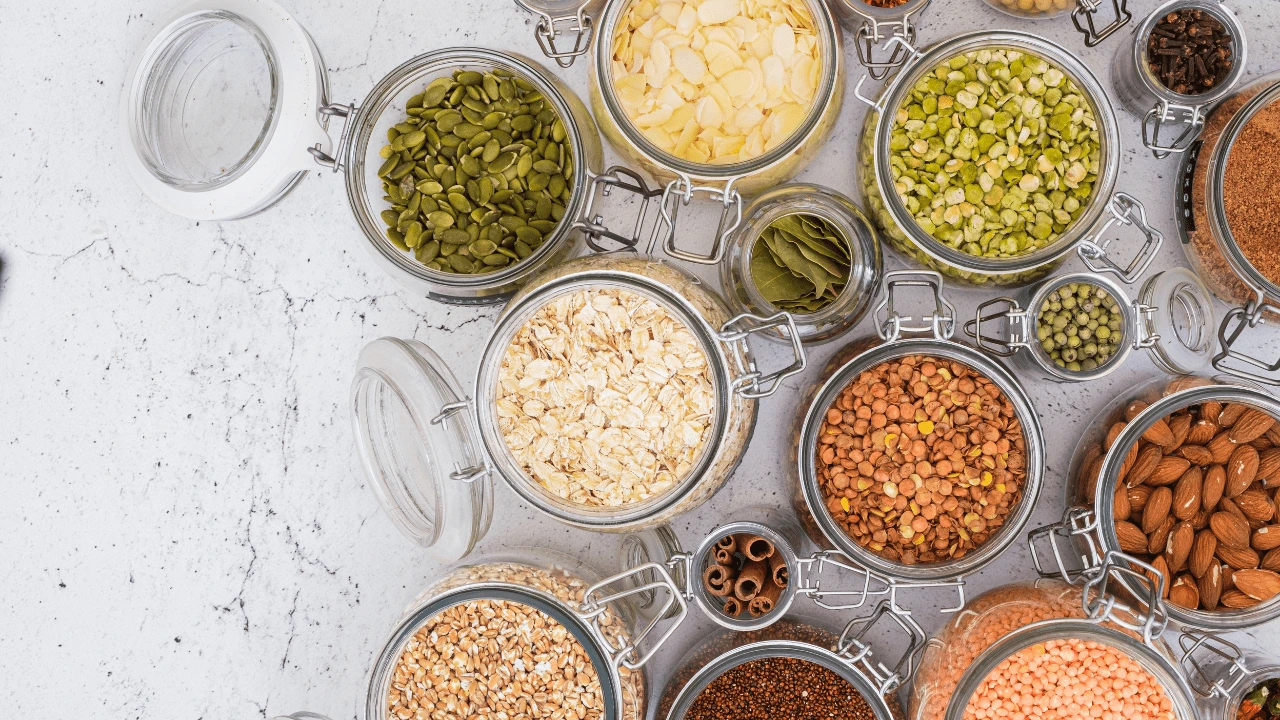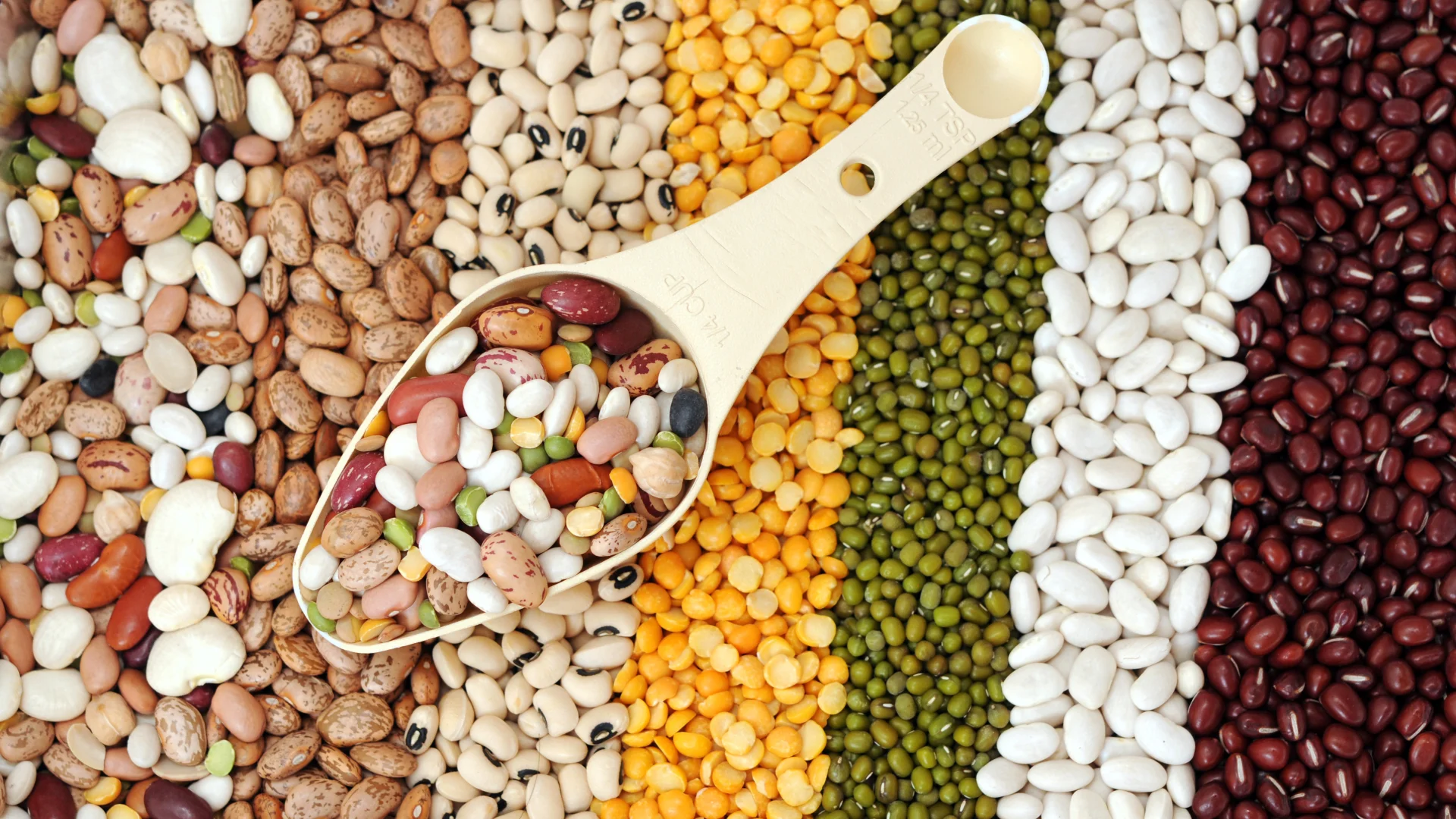
IN this article
- Are beans healthy for babies?
- Can babies be allergic to beans?
- How to serve beans to your baby
- When can babies eat bean?
- How to introduce beans to your baby
Beans are a nutritious first food that can be introduced when your baby is ready for solid foods, usually around 6 months. There are a few key clues that your baby is ready to eat solid food: They can sit up by themselves, have good head control and show an interest in food (like opening their mouth when food is offered).
Once your baby is showing these signs of readiness, pureed beans are a perfect first food, alongside other healthy foods like pureed avocados and bananas.
Are beans healthy for babies?
Bakela – including Qey boloqai, tukur boloqai, nech boloqai, and chickpeas (shinbira) – have many nutrients that are important in a well-rounded diet: protein, iron, fiber, B complex vitamins, and vitamin K. Plus, if your family follows a vegan or vegetarian diet, beans are a great foods since they provide nutrients similar to those found in meat.
Bakela eshei are technically considered a vegetable, because their nutrient value is closer to other vegetables than it is to beans. Raw green beans are high in fiber and have some protein, as well as calcium, iron, and vitamins A, B complex, C, and K. They’re a very common early food for babies when cooked and blended into a puree.
Soybeans – the main ingredient in tofu, soy milk, and other products often marketed as meat and dairy replacements – are high in protein and are a good source of folate, potassium, fiber, and omega-3 fatty acids. One common concern is whether the isoflavones (plant estrogen) in soy products are okay for babies – but experts say these are safe.
Can babies be allergic to beans?
Beans aren’t a food people are commonly allergic to, so it’s unlikely that your baby will have an allergy. The exception to this is the soybean, which is a top allergen and can be found in many processed foods.
Whenever you’re feeding your baby a new food, serve it in the morning and give it to them for three to five days before serving another new food. It’s also best to give your baby new foods at home like beans, rather than at a daycare or restaurant. That way, you can monitor your baby for a reaction and know what’s likely causing it.
Signs of a food allergy include hives, itchy skin rashes, swelling, nausea, vomiting, and diarrhea. If you notice any of these symptoms in your baby, call their doctor.
If your baby has symptoms that involve multiple parts of the body (such as hives with vomiting or diarrhea), it could be an anaphylactic reaction and you should immediately call 911 or emergency number. Other signs of an anaphylactic reaction are pale skin, throat tightness, breathing problems, wheezing, lightheadedness, and loss of consciousness.
How to serve beans to your baby
For very young babies, cooked bakela can be introduced as a puree. Just add them to a blender or food processor, add a little water, and whiz it all together. Add more liquid if needed to get the best consistency.As your baby gets older and their ability to move food around in their mouth and swallow improves, you can feed them smashed bakela instead of a puree. Once they’ve mastered the pincer grasp and they’re able to grab bits of food between their fingers (around 8 to 10 months), you can feed them cooked whole beans.
Hummus (made with ground chickpeas) is a tasty, high-protein dip that makes a good snack for babies and toddlers. If your baby is still mostly eating purees, it’s good on its own or watered down to make it easier for your baby to swallow. If your baby or toddler is old enough for finger foods, it’s great with crackers and soft-cooked vegetables like carrot sticks and broccoli.
Store-bought hummus usually has added lemon juice, which isn’t recommended for babies under a year old because of its acidity. If you want to give your baby hummus, it’s best to make it at home yourself without the lemon juice.
Tofu’s soft consistency and high protein content makes it a great early food for babies. But don’t give babies soy milk until they’re at least a year old – it’s best for them to drink breast milk, formula, or water until then.

When can babies eat bean?
Can babies eat baked baqela at 6 months
Babies at 6 months can eat baqela of all types. If using canned baqela, try to purchase low-sodium. Make sure they are well-cooked and soft before serving to your baby. Squish gently between your fingers for baby-led weaning or mashed up as a puree at this age.
Can babies eat baked baqela at 9 months
Yes — babies at 9 months old can continue to eat baqela. Continue to opt for soft, well-cooked, low-sodium varieties. Baqela make a great finger food at this age once the pincer grasp is established.
Can babies over 12 months old eat baqela?
Definitely! Babies over 12 months old can eat baqela and may begin to enjoy more mixed dishes at this age. Think red baqela and rice, soups, or chilis. Many babies enjoy dipping foods like pretzels or veggies into hummus or other bean dips.
How to introduce beans to your baby
Bean can be eaten in a lot of different ways! They can be prepared on their own, mixed into soups or salads, or made into dips. Your baby can enjoy bean as long as they are prepared appropriately for the age and feeding level.
Serving bean for baby-led weaning
Bean are easy to incorporate into baby-led weaning. Try gently squishing them between your fingers to make them easier to pick up. They can also be served in hummus or another bean dip by spreading it thinly on toast or a cracker.
Serving as a puree
Baqela are naturally soft so it’s simple to turn them into a puree. You can make a thin puree by blending bean or a thicker puree by mashing with a fork. Add water, olive oil, or melted butter to help thin out the texture if desired.


Are beans a choking hazard?
Baqela are not considered a high-risk choking food, but it’s always important to serve food in a safe and appropriate way. Since some baqela have a spherical shape, it’s recommended to lightly squeeze or mash them before serving. Additionally, ensure all beans are soft before serving. When making a puree or dip, it may be helpful to check for large pieces of skin which may be hard to chew for a new eater.
Additional considerations
There are a few things to consider before offering beans and lentils to your little one.
Beans are high in fiber and may cause digestive upset like gas and diarrhea if you give your baby too large of a portion. Start with a very small portion of a tablespoon or so when introducing beans to your baby and increase the portion over time.
Although beans are nutritious, they shouldn’t comprise the bulk of your baby’s diet. Remember to offer your baby a variety of nutrient-dense, whole foods to ensure they’re getting plenty of nutrients.
Lastly, although soybeans and peanuts are common allergens, most beans and lentils are unlikely to cause an allergic reaction in your baby. However, it can happen, so it’s always best to monitor your baby whenever you’re introducing a new food into their diet.
The takeaway
Baqela can be a good choice for your baby’s diet. However, it’s essential to offer beans in safe and healthy ways that are appropriate for your baby’s age.
If you have questions about adding beans to your baby’s diet, talk to your pediatrician.


Add a Comment